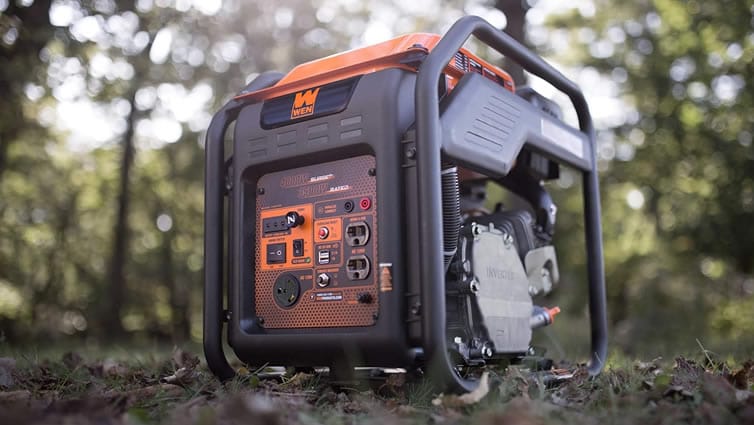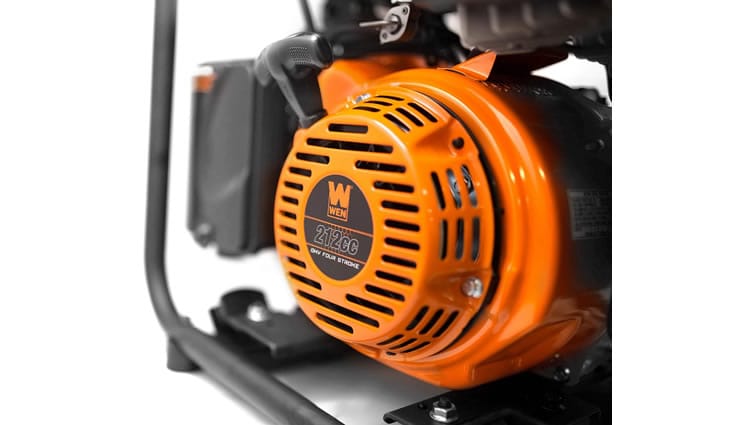Introducing Champion Generator 4000
The Champion Generator 4000 is a powerhouse designed to keep you going no matter the situation. Known for its reliable performance and impressive durability, this generator is built for everything from emergency power at home to outdoor adventures off the grid. With a blend of robust power output and user-friendly features, the Champion Generator 4000 has become a favorite for those who value dependable backup energy that’s ready when you need it most. Whether you’re camping in the wilderness, tailgating, or bracing for a power outage, this generator offers peace of mind and consistent performance.
But there’s more to the Champion Generator 4000 than raw power. Its thoughtful design emphasizes efficiency, ease of use, and portability, making it suitable for a wide range of needs. From the quiet operation to the fuel efficiency, every feature has been crafted to provide convenience and satisfaction. With simple controls and efficient fuel usage, it’s a versatile choice that lets you focus on what you need to power – without the hassle. Let’s dive into what makes the Champion Generator 4000 stand out as a top choice in portable power solutions.
Safe Installation and Setup Steps
Setting up your Champion Generator 4000 doesn’t have to feel overwhelming. With a few simple steps and some thoughtful planning, you can ensure a safe and effective installation. Let’s dive into the essentials, so you’ll feel confident knowing you’ve set up your generator correctly. After all, safety is key, and with a little preparation, you’ll have reliable power without any unnecessary risks.
Choosing the Perfect Spot
The first step in safely installing your Champion Generator 4000 is finding the right location. You’ll want to place it outside, far enough away from windows, doors, and vents to keep exhaust fumes from entering your space. Generators produce carbon monoxide, a gas that’s invisible and odorless but potentially dangerous if inhaled in large amounts. By choosing an outdoor location with plenty of ventilation, you’re already off to a safe start! Aim for a flat, stable surface to keep the generator steady while it runs. Keeping it slightly elevated can also help protect against any water or mud that could build up, especially if you’re using it during storm season.
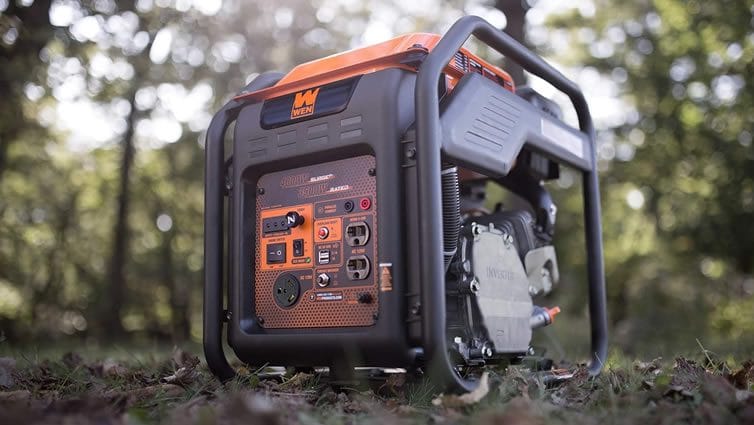
Keeping It Dry and Protected
Weather protection is another important consideration when setting up your Champion Generator 4000. Even though this generator is built tough, keeping it dry and sheltered from heavy rain or snow helps extend its life and keeps it safe to use. A canopy or specialized generator tent works wonders, providing cover without blocking the necessary ventilation. Think of it as giving your generator its own little roof! Just remember, you don’t want to enclose it fully – the generator needs open airflow to avoid overheating and to disperse exhaust safely.
If you’re using your generator during unpredictable weather, having a protective cover can give you peace of mind that your investment is safe from the elements. However, avoid using plastic tarps or enclosed structures, as they can trap heat and fumes. It’s all about balance: a dry, shaded spot with open sides works best.
Grounding Your Generator: A Small Step with Big Impact
Grounding your Champion Generator 4000 is a step that often goes overlooked but plays a big role in safety. Grounding involves connecting the generator to a grounding rod that’s placed securely in the ground. This simple step can help prevent electric shocks by redirecting any stray electricity away from the generator. Some models might not require grounding, but it’s always smart to check the manual for guidance.
To ground your generator, you’ll need a grounding rod and a bit of copper wire – nothing too complex! Insert the rod into the soil, attach the wire, and connect it to the grounding terminal on the generator. This extra layer of safety doesn’t take much time, but it can make all the difference in protecting you and your equipment from electrical risks.
Connecting Power Safely
Now that your Champion Generator 4000 is set up in the right spot and grounded, it’s time to connect it to your home or equipment. Before connecting anything, make sure the generator is off and all equipment you’re planning to power is unplugged. This reduces the chance of electrical surges or overloads. For home use, consider using a transfer switch, which allows you to power circuits directly without running multiple extension cords.
A transfer switch is installed in your home’s electrical panel and is especially helpful if you plan on using the generator for long-term backup power. This simple addition lets you safely direct power where it’s needed most. If you’re connecting smaller items like appliances or lights, using heavy-duty extension cords with the correct wattage rating is key. Avoid overloading any one cord, and make sure the cords are rated for outdoor use if they’re exposed to the elements.
Testing and Running Your Generator: Safety Checks to Remember
Before you start up your Champion Generator 4000 for the first time, do a quick safety check. Make sure the area around the generator is clear of flammable materials like leaves or grass clippings. Keep a fire extinguisher nearby, just in case, and double-check that the generator is on a stable surface. Testing the generator by running it with a small load before adding more devices can help you spot any issues early on.
It’s also a good habit to inspect the generator’s oil and fuel levels before each use. Your Champion Generator 4000 runs best when it’s properly fueled and maintained, so checking these things takes only a few minutes and can keep your generator running smoothly. During operation, avoid adding fuel to the generator while it’s running, as this could lead to dangerous spills or fires.
Staying Safe with Regular Maintenance
Once your Champion Generator 4000 is set up and running, regular maintenance helps ensure ongoing safety and efficiency. Check the air filter, fuel filter, and oil levels periodically, as well as any spark plugs or cables that might wear down over time. Keeping your generator clean and well-maintained can reduce the risk of unexpected breakdowns, keeping you powered up without a hitch.
Cleaning the generator after each use, especially if it’s been exposed to dust or rain, can prevent buildup that might affect performance. You don’t need to be a mechanic to keep things in top shape – a simple cleaning routine goes a long way toward keeping your generator safe and reliable.
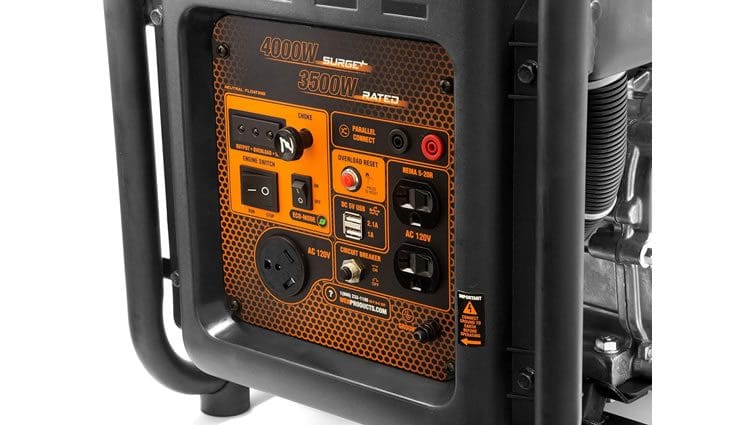
Wrapping It All Up
Setting up your Champion Generator 4000 safely isn’t just about following instructions – it’s about creating a setup that works best for you and your unique environment. By choosing a well-ventilated spot, grounding the unit, using the right connections, and keeping up with maintenance, you’re setting yourself up for safe, worry-free power. With these simple steps, you’ll be able to count on your generator whenever you need it, enjoying reliable backup power without stress or safety concerns.
Electrical Safety and Power Load Management
Using a generator like the Champion Generator 4000 can provide much-needed power when the grid is down, but knowing how to handle electrical safety and power load management is essential for a smooth experience. With just a bit of guidance, you can confidently manage power without overloading your generator or risking electrical issues. Here’s your guide to staying safe and making the most out of your generator’s capacity.
Start with Understanding Your Power Needs
The first step in managing your Champion Generator 4000 is knowing how much power you actually need. Generators are rated by wattage, and every appliance or device you connect will consume a portion of that wattage. Take a few minutes to calculate the total wattage of what you plan to run. Appliances like refrigerators and air conditioners can consume more power when they first start, a phenomenon known as “surge wattage.”
With the Champion Generator 4000 offering a substantial amount of power, you’ll have the flexibility to run multiple devices, but be cautious not to push it too far. Keeping a list of the wattage requirements for each appliance is a helpful way to prevent overloads. This little prep step can save you from accidental outages and ensure that everything runs smoothly.
Balancing Your Load: Avoiding Overload
One of the trickiest parts of managing a generator is balancing the power load. When you exceed the wattage limit, your Champion Generator 4000 can become overloaded, which may lead to tripped breakers or even damage to the generator. To avoid this, try to distribute the load evenly across the generator’s outlets. Think of it like organizing a road trip – you wouldn’t pile everything into one suitcase if you could spread it around.
Start by plugging in your essential devices first, then add less critical items if there’s capacity left. For instance, you might start with the refrigerator, lights, and fans, then add smaller items like a phone charger or coffee maker. By prioritizing and spacing out your power needs, you keep the generator within a safe operating range and avoid stressing it out.
Circuit Breakers: Your Built-In Safety Net
The Champion Generator 4000 comes with built-in circuit breakers that act as a protective barrier against overloads. These breakers automatically shut off power to prevent damage if you plug in too many devices. It’s like having a safety net that catches you before things go wrong. If a circuit breaker trips, don’t panic! It’s just a sign that your generator is protecting itself from being pushed too hard.
To reset the breaker, turn off the generator, unplug some devices, and then reset the switch. Once everything is safely adjusted, you can start the generator again and reconnect your devices one by one. It’s a good reminder that your generator has built-in features designed to keep you and your equipment safe.
Using Heavy-Duty Extension Cords
One of the easiest ways to ensure electrical safety with your Champion Generator 4000 is by using the right extension cords. Ordinary indoor cords aren’t built for the job – you’ll need heavy-duty, outdoor-rated cords that can handle the generator’s output without overheating. Look for cords with a thick gauge and check the packaging to confirm they’re rated for outdoor use and high wattage.
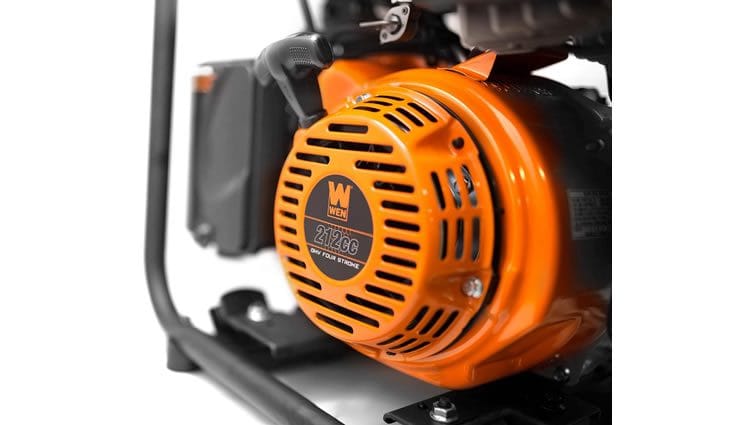
Heavy-duty extension cords help reduce the risk of electrical issues like overheating or short circuits. They also make it easier to keep your generator at a safe distance from your home or campsite, which is important for both safety and noise reduction. When in doubt, choose the shortest cord that meets your needs, as shorter cords tend to carry power more efficiently.
Avoiding Water and Moisture Hazards
Water and electricity don’t mix well, so keeping your generator and its connections dry is a must. The Champion Generator 4000 is designed to withstand a variety of conditions, but exposed plugs or cords can still pose a risk if they get wet. Set up your generator in a well-ventilated, covered area to avoid unexpected weather or moisture exposure.
If you’re using the generator in rainy conditions, consider placing it under a canopy or generator tent to keep it safe. Additionally, ensure any extension cords and connections are elevated or placed on dry ground. This simple precaution can make a big difference in maintaining safe operation and reducing the risk of electrical accidents.
Monitoring Your Generator’s Load
Keeping an eye on your power load is key to managing electrical safety with your Champion Generator 4000. Many portable generators come with a load meter or wattage indicator, which shows you how much power you’re using at any given time. If your generator doesn’t have one, you can find separate watt meters that plug directly into the outlets.
By tracking your load, you’ll know when you’re approaching the generator’s capacity and can unplug or reduce the load as needed. This can help extend your generator’s lifespan and maintain steady, efficient operation. Plus, it gives you peace of mind knowing that you’re using your power resources responsibly.
Safely Shutting Down the Generator
When it’s time to turn off your Champion Generator 4000, following the proper shutdown process is crucial for safety. Begin by unplugging any devices connected to the generator. This reduces the strain on the generator and prevents electrical surges when it shuts down. After all devices are unplugged, turn off the generator’s engine following the instructions in the user manual.
It’s also a good practice to let the generator cool down before refueling, especially if you plan on using it again soon. Fueling a hot generator can be hazardous, so a quick cool-down break is always smart. By shutting down properly, you’re taking one last step to protect your equipment and ensure safe, worry-free usage.
Managing electrical safety and power load with your Champion Generator 4000 doesn’t have to be complicated. By understanding your power needs, balancing your load, using quality cords, and keeping things dry, you can run your generator confidently. With these tips, you’re equipped to handle any power situation safely and effectively, keeping your devices powered up without a hitch. Enjoy the peace of mind that comes with knowing you’re running your generator in the safest way possible.
Proper Ventilation and Placement Advice
Setting up your Champion Generator 4000 is more than just finding a convenient spot to place it; proper ventilation and placement are critical for safe, efficient operation. By choosing the right location and understanding the basics of ventilation, you’ll not only extend the life of your generator but also keep yourself and others safe. Here’s how to set up your generator to keep it running smoothly, even during prolonged use.
Find the Ideal Spot: Safety First!
The most important rule for placing your Champion Generator 4000 is to keep it outdoors. Generators release carbon monoxide, an odorless and dangerous gas, making outdoor use essential for safety. When choosing a spot, find an area at least 20 feet away from windows, doors, or vents. Think of it as setting up a safe perimeter to ensure that exhaust fumes don’t sneak their way into your living spaces.
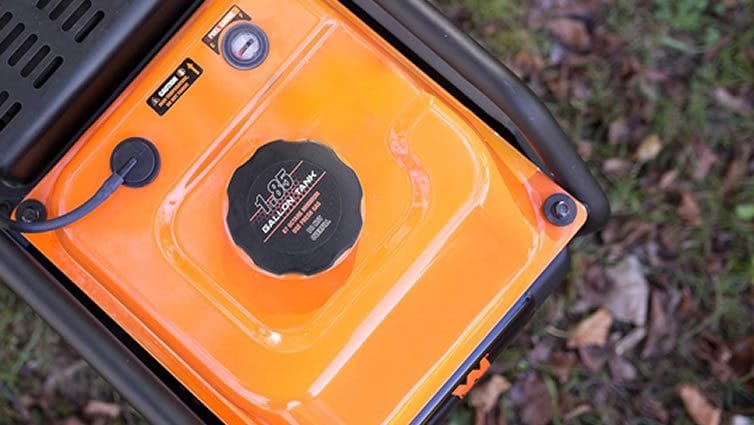
Consider wind direction, too, as breezes can carry fumes into areas you want to keep clear. Placing your generator on a stable, level surface helps with ventilation and keeps it running efficiently. A concrete pad or level ground works well to prevent tipping or shifting during use. Your generator deserves a spot that’s stable and safe, allowing you to operate it worry-free.
Creating a Clear Path for Exhaust
For the Champion Generator 4000 to run at its best, it needs a clear path for exhaust fumes to disperse. Blocked exhaust can lead to overheating and reduced performance. Try to avoid placing the generator near walls, fences, or any large objects that might restrict airflow around it.
Think of it like giving your generator breathing room – it performs better when it’s not cramped. Avoid spots where leaves, dirt, or other debris could gather, as these can clog up the ventilation areas. By keeping the exhaust path clear, you help your generator work efficiently and reduce the risk of heat buildup.
Ventilation Matters: Let Your Generator Breathe
Just like any machine, your Champion Generator 4000 needs proper ventilation to operate safely. Generators produce a lot of heat, so setting it up in a spot with good airflow is essential. Choose an open area where air can freely move around the generator, helping it stay cool and prevent overheating.
If possible, avoid placing your generator in small spaces like garages or sheds. Even with doors or windows open, these areas can trap fumes and heat. Outdoor canopies or generator tents designed for ventilation are great options, providing shelter from rain while still allowing airflow. Ventilation isn’t just about cooling – it’s a safety measure that keeps you protected.
Avoid Enclosed Spaces: Why Outdoors Is Always Better
It might be tempting to run your Champion Generator 4000 in an open garage or covered porch, especially during poor weather. But enclosed spaces can trap carbon monoxide, creating a hazardous environment even if they feel “open.” Operating your generator in fully outdoor areas minimizes this risk entirely.
If you’re worried about rain or snow, invest in a generator tent or canopy that allows for ventilation while offering basic weather protection. Avoid makeshift covers like tarps, as they can block airflow and trap exhaust fumes. Keeping your generator outside with plenty of ventilation ensures that you’re using it in the safest way possible.
Using Proper Covering for Weather Protection
When your Champion Generator 4000 is operating outdoors, the weather can be unpredictable. For light rain or snow, you can use a weather-rated generator tent or canopy that’s designed for ventilation and safety. These covers protect your generator from the elements without compromising on airflow, allowing it to stay dry and perform at its best.
Think of these covers as your generator’s raincoat – a little extra protection goes a long way. However, avoid enclosing the generator on all sides, as it can lead to overheating and reduce efficiency. Proper covering is all about balance: protection from the elements with open airflow to prevent heat buildup.
Minimizing Noise with Smart Placement
Generators can be noisy, and finding the right spot can help reduce the impact on you and your neighbors. The Champion Generator 4000 is designed to run efficiently, but placing it away from high-traffic areas is a courtesy to everyone around. Placing it behind a barrier like a fence or a few feet of shrubbery can help deflect sound without blocking airflow.
Experiment with different spots if noise is a concern, and try to place the generator on a firm surface that won’t amplify vibrations. Proper placement not only keeps the noise down but also ensures that your generator is securely positioned and running smoothly.
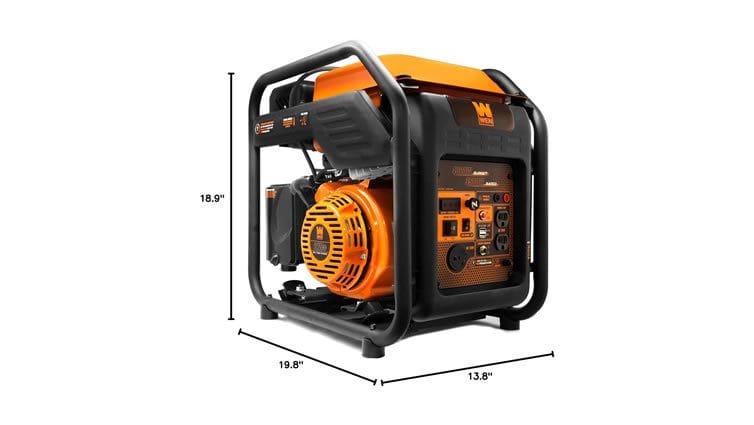
Keeping the Generator Clear of Debris
Your Champion Generator 4000 performs best when it’s free from debris. Keep the surrounding area clear of leaves, sticks, or other materials that could clog the ventilation areas or create fire hazards. Wind can blow debris around, so checking your generator’s area regularly helps keep it clean and safe.
Maintaining a debris-free zone not only improves ventilation but also protects the generator from accidental damage. A little tidying up around the generator area goes a long way in preserving its performance and ensuring it runs smoothly when you need it most.
Placement and Ventilation for Long-Lasting Performance
Setting up your Champion Generator 4000 with proper placement and ventilation isn’t just about following instructions – it’s about creating a safe, reliable setup that supports the generator’s longevity. By choosing an open, stable spot, protecting it from the weather, and ensuring ventilation, you’re helping your generator perform its best every time. A little planning goes a long way in keeping your generator safe, efficient, and ready to power up whenever you need it.
Emergency Situations and What to Do
Emergencies are unpredictable, but having the right knowledge can make all the difference. Your Champion Generator 4000 is a powerful tool for keeping you safe and connected during power outages or other unexpected situations. By following a few simple steps, you’ll be prepared to use your generator efficiently, troubleshoot common issues, and respond to any situation that comes your way. Let’s dive into what you need to know when emergencies arise.
Knowing When and How to Use Your Generator
In an emergency, the last thing you want is to be scrambling to figure out how to use your generator. Take a few minutes now to review the basics of your Champion Generator 4000. Practice starting it up, connecting essential appliances, and managing the power load before you actually need it. This simple prep step can save you time and stress during a real emergency.
When a power outage hits, first assess your power needs. Prioritize essential appliances like your refrigerator, medical devices, and lights. Remember, it’s important to avoid overloading the generator, as this can cause it to shut down or become damaged. A little advance planning will help you stay calm and make the most of your generator’s capabilities.
Staying Calm and Checking for Safety Hazards
In the rush of an emergency, it’s easy to overlook basic safety measures. Before you start up your Champion Generator 4000, take a quick look around to ensure everything is safe. Make sure the generator is set up outdoors, in a well-ventilated area, at least 20 feet away from windows and doors. This keeps carbon monoxide fumes from entering your home, helping you and your family stay safe.
Next, double-check that the generator is stable and free from any flammable materials like dry leaves or household items. If it’s dark, use a flashlight to do a quick inspection of your setup area. These small safety checks can prevent larger issues and ensure that your generator is operating as safely as possible.
How to Handle Power Surges and Overloads
During an emergency, it’s common to want to plug in multiple devices. However, pushing your Champion Generator 4000 beyond its wattage limit can cause a power surge or overload. Overloading the generator might lead to tripped breakers or even damage to your appliances. But don’t worry – with a few simple steps, you can avoid this issue.
Start by plugging in your most essential devices first. Use a power strip to help manage multiple items, and keep an eye on the power load. If you’re unsure, refer to the wattage labels on each appliance, and don’t hesitate to unplug something if the generator seems to be struggling. If a breaker trips, it’s a sign you’re overloading the generator. Simply unplug a few items, reset the breaker, and continue with a reduced load.
Troubleshooting Common Issues
Even in the best-planned situations, generators can run into issues. The good news is that most of these are easy to fix with your Champion Generator 4000. If your generator won’t start, check to make sure it has enough fuel and oil. Sometimes a quick top-up is all it needs to get running again. If it’s still not working, inspect the spark plug and air filter to ensure they’re clean.
Another common issue is a lack of power output. If your generator is running but isn’t powering your devices, check all your connections. A loose cord or improperly seated plug can cause intermittent power issues. Staying patient and checking each part of the setup can help you get the generator back on track.
Refueling Safely in a Crisis
Running out of fuel during an emergency can be stressful, but refueling your Champion Generator 4000 safely is essential. Before adding fuel, turn off the generator and let it cool down for at least five minutes. Fueling a hot generator can be dangerous, so this cool-down period is a must.
Keep a fuel container nearby, and ideally, choose a spot where you can refuel without needing to move the generator. Use a funnel for a steady pour, minimizing spills. By staying calm and refueling carefully, you’ll be back up and running in no time without risking any accidents.
Managing Long-Term Power Outages
Sometimes, emergencies like hurricanes or winter storms can lead to extended power outages. If your Champion Generator 4000 will be running for days, it’s important to establish a routine for safe, continuous operation. Set up a refueling schedule to keep your generator consistently powered, and store extra fuel in a safe location.
Consider rotating which appliances you power to avoid overworking the generator. For example, you can alternate between powering your refrigerator and lights every few hours to balance the load. This approach keeps essential appliances running and reduces strain on the generator, helping it last through longer emergencies.
Staying Informed During Emergencies
Staying informed during an emergency can help you make better decisions about generator usage. Many local weather services provide updates on power restoration times, allowing you to plan accordingly. Using your Champion Generator 4000 wisely can help conserve fuel if you know the outage will end soon.
If possible, keep a battery-powered radio or charged smartphone on hand to receive emergency alerts. This helps you stay aware of any developments in the area, including shelter locations or community resources. Knowledge is power, and being informed can ease the stress of an extended outage.
When to Call a Professional for Help
Sometimes, generator issues are beyond a quick fix. If you notice strange noises, smoke, or leaks from your Champion Generator 4000, it’s best to call in a professional. Continuing to use a generator with these problems can be risky, and a professional can address the issue safely.
Many authorized service centers or repair technicians specialize in portable generators, so you can find help even during emergency times. Remember, safety always comes first, and a quick check-up can ensure your generator is operating correctly without posing any risks.
Being Prepared for the Unexpected
Emergencies don’t come with a warning, but having your Champion Generator 4000 ready to go can bring peace of mind. With the right setup, safety precautions, and troubleshooting know-how, you’ll be prepared to handle any situation with confidence. From managing power loads to staying informed, each small step you take can make a big difference. Stay calm, stay prepared, and let your generator do the heavy lifting during those unpredictable times.

